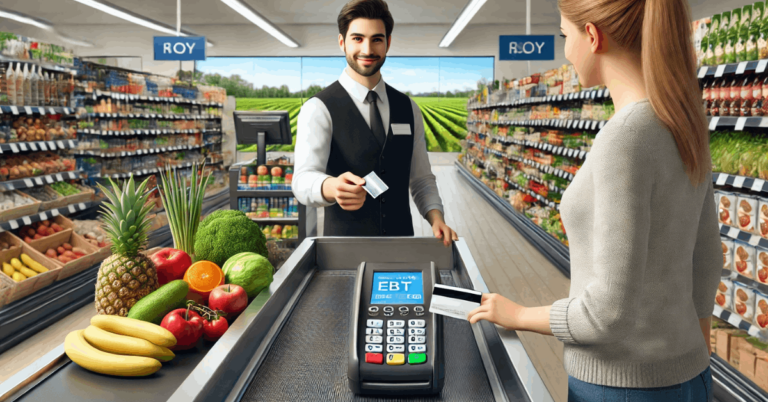Technology is revolutionizing how you manage money, boosting personal finance by making it more straightforward and accessible.
Budgeting apps and investment platforms empower you to take control of your finances.
This article covers ten ways technology can enhance financial management, helping you make smarter decisions and reach your goals.
Budgeting Apps
Budgeting apps like Mint and YNAB track income and expenses effectively through detailed categorization, real-time updates, and insightful reports. Here’s how:
- Detailed Categorization: Apps like Mint categorize transactions automatically, making it easy to see where money goes.
- Real-time Updates: They provide up-to-date balances and transaction information, ensuring users know their financial standing.
- Financial Reports: Apps generate reports summarising spending habits and trends, aiding in better financial decision-making.
Automated Savings Tools
Tools that automatically transfer money into savings can simplify building an emergency fund or achieving financial goals.
Examples like Acorns and Digit make saving effortless by automating the process. Here’s how they work:
- Round-Up Savings: Acorns rounds up your everyday purchases to the nearest dollar and invests the spare change.
- Automatic Transfers: Digit analyzes your spending patterns and regularly transfers small, affordable amounts to your savings account.
- Customizable Goals: Both tools allow users to set specific savings goals and automate contributions towards them.
Investment Platforms
Technology has democratized investing, making it more accessible to everyone. Platforms like Robinhood and E*TRADE are central to this change.
- No-Fee Trading: Robinhood offers commission-free trades, lowering costs and opening up investing to more people.
- User-Friendly Interfaces: E*TRADE’s easy-to-use platforms suit both beginners and experienced investors.
- Educational Resources: Robinhood and E*TRADE provide tools and resources to help users understand investing.
- Diverse Options: These platforms offer various investment choices, from stocks and ETFs to cryptocurrencies, simplifying portfolio diversification.
Financial Planning Software
Using software for long-term financial planning offers a structured approach to managing finances and achieving goals.
Tools like Quicken and Personal Capital provide valuable features to streamline this process. Here’s how they benefit users:
- Comprehensive Tracking: Quicken helps track all financial accounts in one place, providing a clear overview of your financial status.
- Goal Setting and Monitoring: Personal Capital helps users set and track long-term financial goals, like retirement and investment growth.
- Detailed Reports: Both tools generate detailed reports and analyses, assisting users in making informed decisions based on their financial data.
- Budgeting and Expense Management: They offer features for budgeting and managing expenses, aiding in maintaining financial discipline.
Online Banking
Online banking has revolutionized financial management by offering unmatched convenience and accessibility.
Features like mobile deposits and account alerts enhance the ease of managing finances from anywhere. Here’s how:
- Mobile Deposits: Users can deposit checks using their smartphone cameras, eliminating trips to the bank.
- Account Alerts: Real-time notifications inform users about account activity, helping monitor transactions and prevent fraud.
- 24/7 Access: Online banking provides round-the-clock access to accounts, allowing users to check balances, transfer funds, and pay bills anytime.
Robo-Advisors
Robo-advisors provide automated investment advice, making professional portfolio management accessible to everyone.
Services like Betterment and Wealthfront use algorithms to optimize investment strategies based on user goals. Here’s how they work:
- Automated Portfolio Management: Betterment and Wealthfront use algorithms to manage portfolios according to your goals and risk tolerance.
- Low Fees: These services typically charge lower fees than traditional financial advisors, making them cost-effective.
- Goal-Based Planning: Users input their financial goals, and the robo-advisors adjust investment strategies to help meet them.
- Rebalancing and Tax Optimization: They automatically rebalance portfolios and employ tax-efficient strategies to maximize returns.
Peer-to-Peer Lending
P2P lending offers an alternative to traditional financing by connecting borrowers with individual investors.
Platforms like LendingClub and Prosper facilitate this process. Here’s how:
- Direct Connections: LendingClub and Prosper link borrowers directly with investors, bypassing banks.
- Flexible Terms: Borrowers often access various loan terms and amounts with better conditions.
- Competitive Rates: Investors can earn higher returns, while borrowers may get lower interest rates.
- Diversified Investment: Investors spread money across multiple loans, diversifying risk and increasing potential returns.
Cryptocurrency
Cryptocurrencies have introduced new investment opportunities and payment methods, offering the potential for high returns and greater financial flexibility.
However, their volatility and regulatory uncertainty also threaten personal finance management.
Platforms for Buying, Selling, and Managing Crypto
Platforms for buying, selling, and managing cryptocurrencies have simplified the process of participating in the crypto market.
Services like Coinbase and Binance offer comprehensive tools for handling digital assets. Here’s what they provide:
- User-Friendly Interfaces: Coinbase offers an intuitive platform for beginners to buy, sell, and manage various cryptocurrencies.
- Advanced Trading Features: Binance provides advanced trading options and tools for experienced users to manage their crypto portfolios.
- Secure Storage: Both platforms include secure storage options to protect digital assets from theft and loss.
- Market Insights: They offer real-time market data and analysis tools to help users make informed investment decisions.
Financial Education Resources
Technology has expanded access to financial education through various digital mediums, making learning more accessible and convenient.
Platforms like Coursera and Khan Academy offer valuable resources for enhancing financial literacy. Here’s how:
- Online Courses: Coursera offers financial courses from universities and experts that cover personal finance and investments.
- Educational Podcasts: Financial podcasts provide insights and advice on various financial topics, making it easy to learn on the go.
- Informative Blogs: Reputable sources offer up-to-date information and practical tips on managing finances and investing.
- Interactive Tools: Khan Academy features interactive lessons and exercises to help users understand financial concepts at their own pace.
Expense Tracking Tools
Tracking expenses is essential for financial health and effective budgeting. Tools like Expensify and PocketGuard make this task more accessible and more efficient. Here’s how they assist:
- Receipt Scanning: Expensify allows users to scan and categorize receipts, simplifying expense tracking.
- Automated Categorization: It automatically categorizes expenses, providing a clear overview of spending patterns.
- Budget Tracking: PocketGuard tracks spending against your budget, showing how much disposable income remains.
- Expense Insights: It offers insights into spending habits, helping users make informed financial decisions.
To Sum Up: Elevate Your Financial Management with Technology
Technology can significantly improve personal finance management, from automating savings to providing financial education.
You can better control your finances by using tools like budgeting apps, robo-advisors, and online courses.
Explore these tech solutions today to enhance your financial well-being and reach your goals.












